Endangered species are animals and plants on the brink of extinction, with their numbers plummeting due to various threats such as habitat loss, poaching, climate change, and pollution. The International Union for Conservation of Nature (IUCN) Red List serves as a critical barometer for the health of the world’s biodiversity, categorizing species based on their extinction risk.
Species deemed Critically Endangered, Endangered, or Vulnerable are all at risk of vanishing. Habitat destruction, driven by human activity, remains a primary cause of dwindling numbers, while factors such as invasive species and disease further exacerbate the struggle for survival.
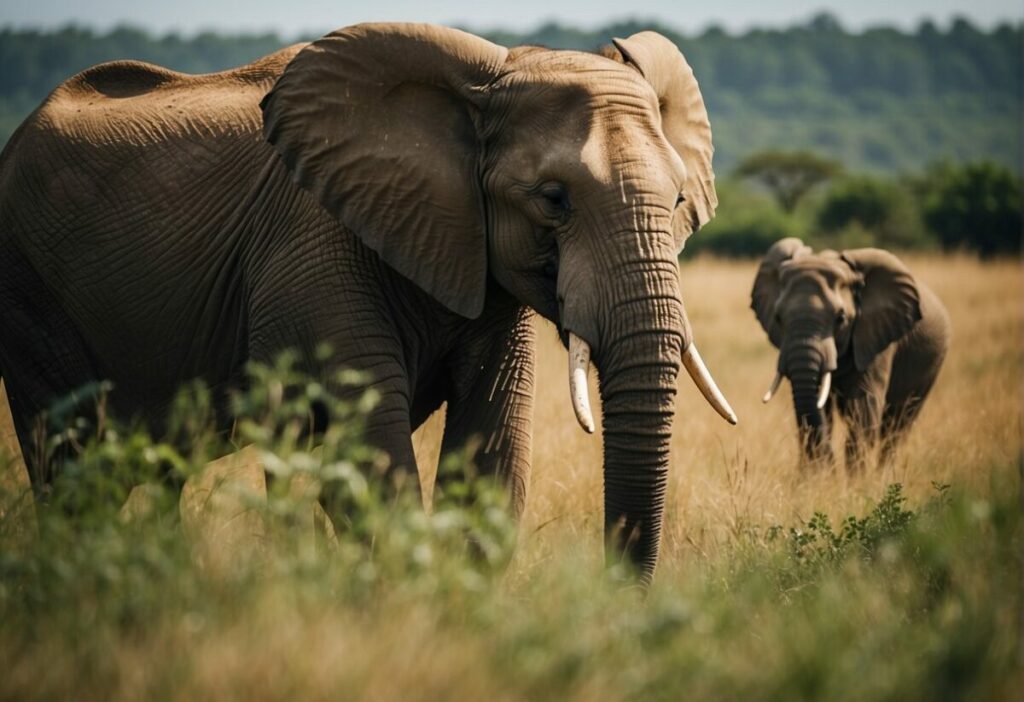
The Endangered Species Act in the United States is one of the many laws intended to protect imperiled species from extinction. Across the globe, conservation actions are being taken to safeguard these species, ranging from legal protections and wildlife management to developing recovery plans focusing on preserving genetic variation and bolstering population sizes.
Scientists and researchers employ rigorous criteria to assess the status of species, guiding these conservation efforts.
To curb the tide of extinction, it is crucial for conservation actions to be supported and for policies to be implemented effectively. It’s a collective responsibility to foster an environment where native and endangered species can thrive.
Individuals can help by supporting conservation organizations, being mindful of their ecological footprint, and engaging in policy advocacy to ensure the protection of vulnerable species.
The urgency in addressing the decline of these species is heightened by the prospect of an irrevocable loss of biodiversity that would profoundly alter ecosystems and the natural balance of native species contribute to.
Amur Leopard
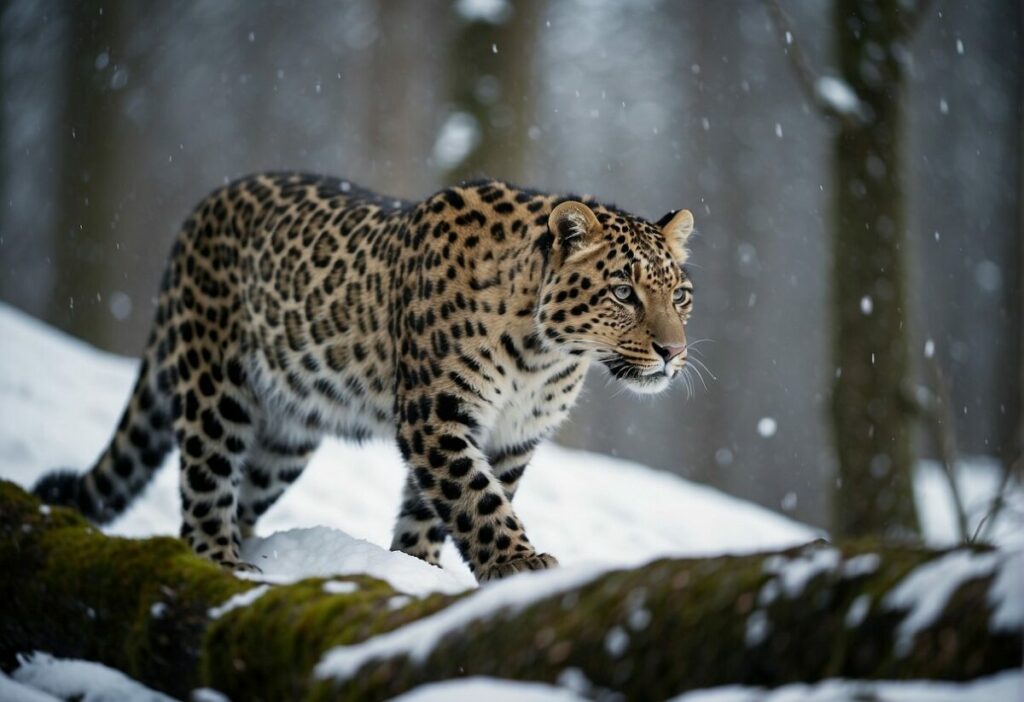
The Amur leopard, a majestic and elusive big cat, suffers from the dire threat of extinction. Classified as ‘critically endangered’ by the IUCN Red List, the species faces numerous challenges to its survival.
Population Size:
Recent estimates suggest that fewer than 100 individuals remain in the wild, occupying a fraction of their historic range. The number has seen slight increases due to conservation efforts, demonstrating a potential for recovery if such efforts persist.
Habitat Loss:
The primary threat to the Amur leopard is habitat destruction. Expanding human activities, such as agriculture and urban development, disrupt the contiguous territories necessary for their survival.
Poaching:
The demand for their beautiful spotted fur further endangers their existence as poaching continues to diminish already scant populations.
Conservation Efforts:
Conservation groups have been actively working to protect Amur leopards. Initiatives include anti-poaching patrols, habitat restoration, legislative advocacy, and scientific research to monitor populations and inform continued conservation strategies.
Threat | Description |
|---|---|
Habitat Loss | Destruction and fragmentation from human encroachment |
Poaching | Illegal hunting for fur and body parts |
Small Population Size | Low genetic diversity and high risk of inbreeding |
Conservation efforts play a crucial role in the survival of the Amur leopard. It is imperative that ongoing protection and recovery programs are supported.
Donating to wildlife conservation organizations, spreading awareness, and advocating for stronger environmental policies can contribute significantly to the species’ chance of survival. Engaging in these active measures can offer hope for the future of the Amur leopard.
See Related: Groundbreaking Wildlife Conservation Efforts to Watch in 2024
Javan Rhino
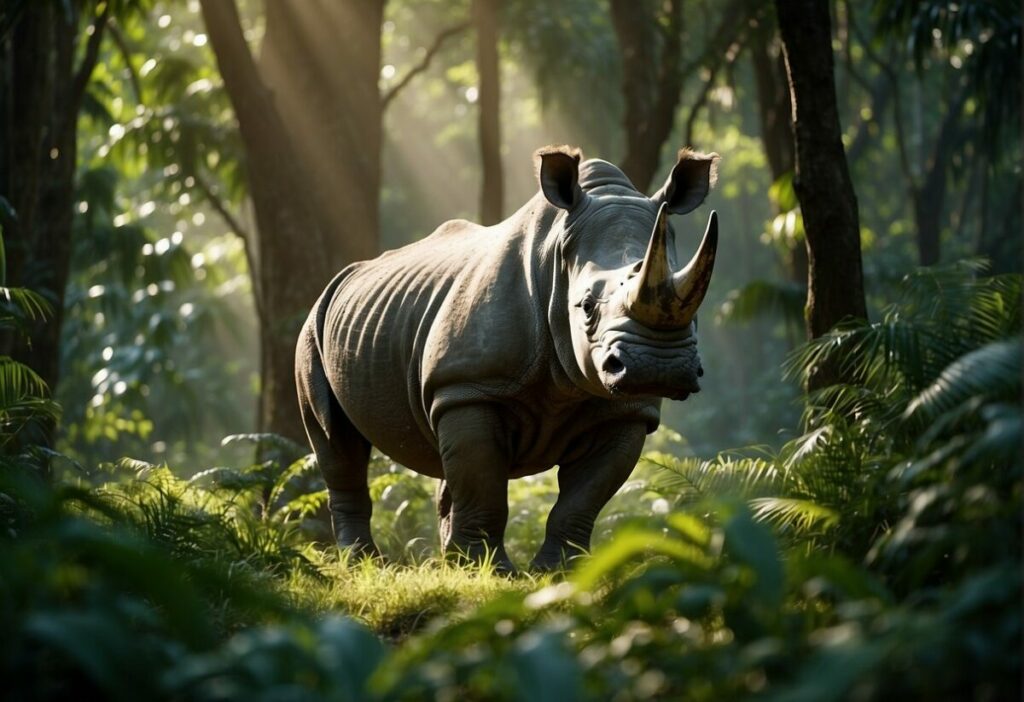
The Javan rhino, once inhabiting vast regions of Southeast Asia, is now critically endangered, with the sole surviving population found in Ujung Kulon National Park on Java, Indonesia.
Listed among the world’s most endangered mammals, the Javan rhino is a dusky grey beast with a single horn, reaching lengths up to 4 meters and weighing as much as 2.3 tonnes.
Habitat Loss and Threats
The story of the Javan rhino is a grim tale of habitat loss due to agricultural expansion, poaching, and the threat of invasive species that alter the ecosystem balance. Vietnam’s last Javan rhino was a victim of poaching in 2010, demonstrating the severe impact of human actions on their numbers.
Conservation Efforts
Efforts to conserve this species are constrained by their small numbers. World Wildlife Fund and local authorities have been diligently working to protect these rhinos, focusing on anti-poaching measures and maintaining the biodiversity of their natural habitat.
- Support Needed:
- Anti-poaching initiatives
- Habitat protection
- Awareness campaigns
Conservation Needs | Description |
|---|---|
Anti-Poaching | Strengthening patrols and legal frameworks |
Habitat Protection | Ensuring a safe and sustainable environment |
Genetic Diversity | Exploring breeding programs to prevent inbreeding |
The survival of the Javan rhino hinges on immediate action. They invite readers to engage with conservation organizations, support anti-poaching patrols, and spread awareness of the Javan rhino’s plight. It is crucial to intensify our efforts today to ensure these majestic creatures do not vanish from our world.
Vaquita
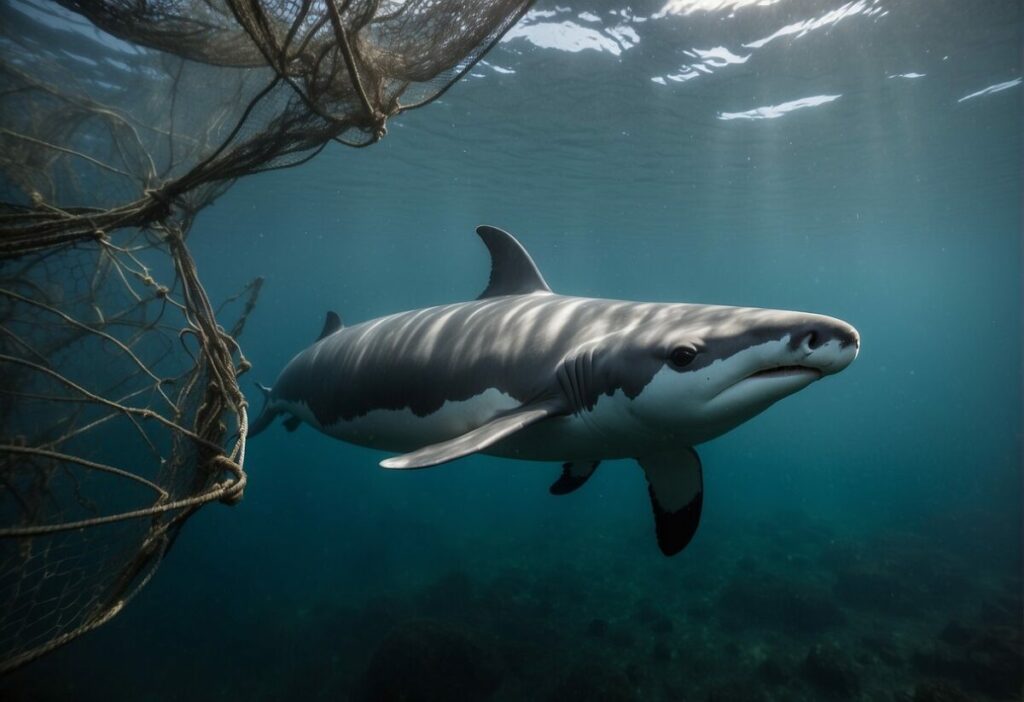
The vaquita is the world’s smallest cetacean and is critically endangered. Found solely in the northern reaches of the Gulf of California, these marine mammals have experienced drastic population declines. Scientists estimate fewer than 20 individuals remain, making vaquitas the most endangered of their kind.
The primary threat to vaquitas is bycatch; they are frequently entangled in gillnets set for other species like the totoaba—a similarly critically endangered marine fish.
Despite conservation areas designated within Mexico’s Gulf of California, illegal fishing operations and poaching of totoaba for their swim bladders have inadvertently pushed vaquitas toward extinction.
Conservation efforts include the enforcement of gillnet bans and the promotion of alternative fishing methods to prevent bycatch. Nonprofits and governmental agencies work tirelessly on these fronts, but the situation remains dire.
Threat | Impact on Vaquitas |
|---|---|
Illegal Gillnets | Primary cause of death |
Poaching of Totoaba | Indirect threat |
Limited Range | Vulnerability to extinction |
The vaquita is a recent discovery, only known since 1958, yet faces imminent extinction without immediate action. Individuals can support conservation efforts by donating to organizations that work to save the vaquita and by spreading awareness about the ongoing illegal gillnet use in their habitat.
Urgency is critical; losing the vaquita would signify a troubling milestone in our planet’s marine biodiversity crisis.
Sumatran Elephant
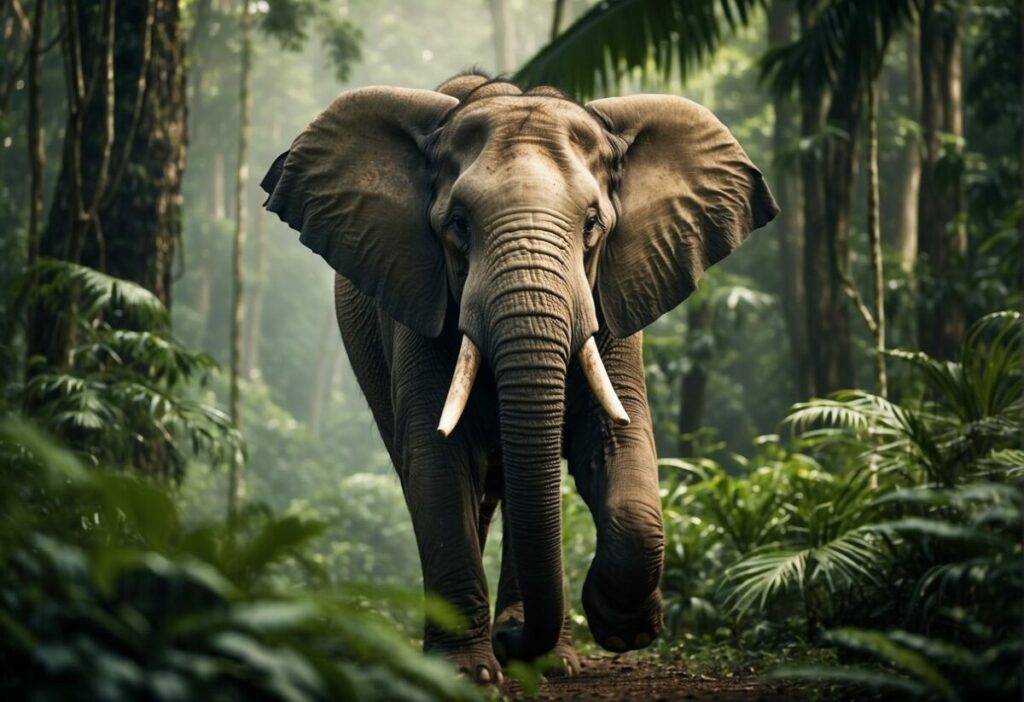
The Sumatran elephant (Elephas maximus sumatranus) is a critically endangered subspecies of the Asian elephant. Native to Sumatra, these elephants are integral to maintaining the forest ecosystem, as they disperse seeds that contribute to forest health. Unfortunately, their existence faces severe threats.
Habitat Loss: The primary threat is habitat loss, attributed mainly to deforestation from illegal logging and agricultural expansion. Sumatra has lost a significant portion of its natural lowland forest—elephants’ preferred habitat—causing a drastic reduction in their population.
Human-Elephant Conflict: As their habitat shrinks, elephants are forced into close proximity to human settlements, leading to conflicts. These situations often result in harm to both humans and elephants and contribute to the decline of elephant populations.
Conservation Efforts:
- Protected Areas: Establishment of protected regions to conserve critical habitats.
- Anti-Poaching Initiatives: Active prevention of illegal hunting and capture.
- Community Engagement: Encouraging local communities to participate in conservation and conflict resolution strategies.
Threats | Impacts |
|---|---|
Habitat Loss | Decreases living space and food sources |
Illegal Logging | Accelerates habitat destruction |
Human-Elephant Conflict | Leads to casualties on both sides |
Readers can support conservation efforts by advocating for sustainable forest management practices, supporting organizations that protect the Sumatran elephant, and raising awareness about the urgency of this issue. Immediate and concerted action must be taken to ensure the survival of this essential species for future generations.
Saola
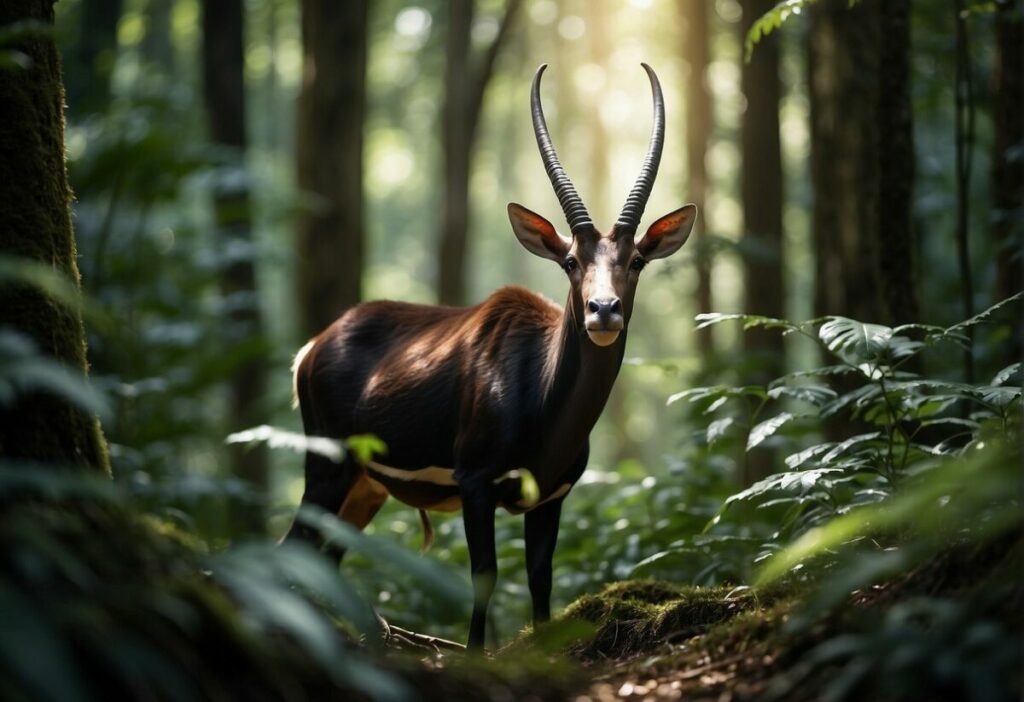
The Saola, also known as the Asian unicorn, is a critically endangered species that inhabits the evergreen forests of the Annamite Range bordering Vietnam and Laos. This elusive mammal was first discovered in 1992 and remains one of the rarest large mammals on Earth.
Physical Characteristics:
- Height: Approximately 33 inches at the shoulder.
- Weight: 176-220 lbs.
- Horns: Notable long, straight horns.
Habitat and Range:
The Saola’s habitat comprises subtropical/tropical moist environments characterized by evergreen or mixed woodlands. Preferring the edge zones of these areas, they have a limited range confined to the slopes of the Annamite Mountains.
Conservation Status:
- Category: Critically Endangered
- Threats: Habitat loss, poaching
Biodiversity in the Saola’s habitat is under threat, primarily due to poaching and human encroachment. Despite the species’ critical status, it remains lesser known than other endangered animals like elephants or tigers.
Conservation Efforts:
Efforts to conserve the Saola include habitat protection, anti-poaching measures, and raising awareness of its plight. Organizations like the World Wildlife Fund (WWF) are actively involved in these conservation activities.
Readers can support these efforts by spreading awareness about the Saola, contributing to conservation organizations, and advocating for strong environmental policies.
See Related: Fascinating Animals With Horns
Sumatran Orangutan
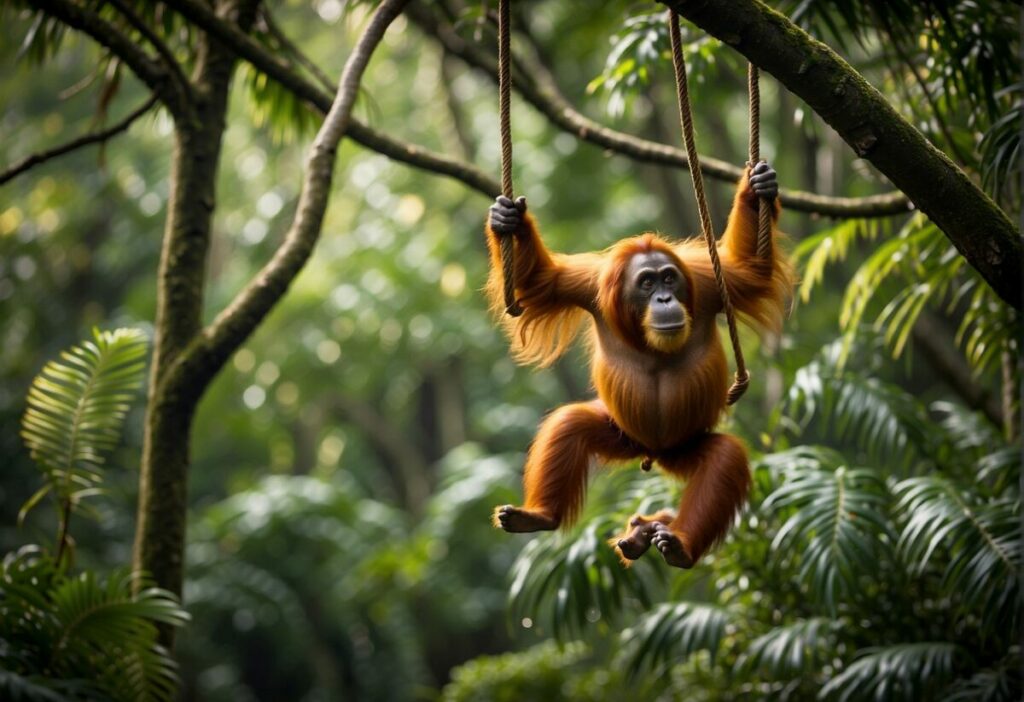
The Sumatran orangutan (Pongo abelii), inhabiting the tropical forests of Sumatra, Indonesia, is facing critical endangerment. With an estimated population under 7,500, conservation efforts are vital to ensuring their survival.
Habitat and Threats
The primary forest areas that these orangutans call home are rapidly being lost to deforestation. A significant driver of this deforestation is the expansion of palm oil plantations, an industry associated with significant habitat destruction.
This loss of habitat is a direct threat to the survival of the species, as it reduces the availability of resources and space necessary for their way of life.
Conservation Actions
Efforts to protect the remaining population include habitat conservation and anti-poaching measures. Organizations like the World Wildlife Fund work tirelessly to establish protected areas and promote sustainable land use practices.
Conservation Efforts | Description |
|---|---|
Protected Areas | Creation of spaces safe from deforestation |
Sustainable Practices | Encouragement of eco-friendly palm oil production |
Anti-Poaching | Mitigation of illegal hunting threats |
Get Involved
It’s urgent that individuals support these conservation actions. Donations, responsible consumer choices, and awareness-raising are all ways to contribute. Opting for products with sustainable palm oil can lessen the impact on Sumatran orangutan habitats.
By advocating for and supporting these critical conservation efforts, individuals can help turn the tide for the Sumatran orangutan and ensure the species’ presence for generations to come.
Cross River Gorilla
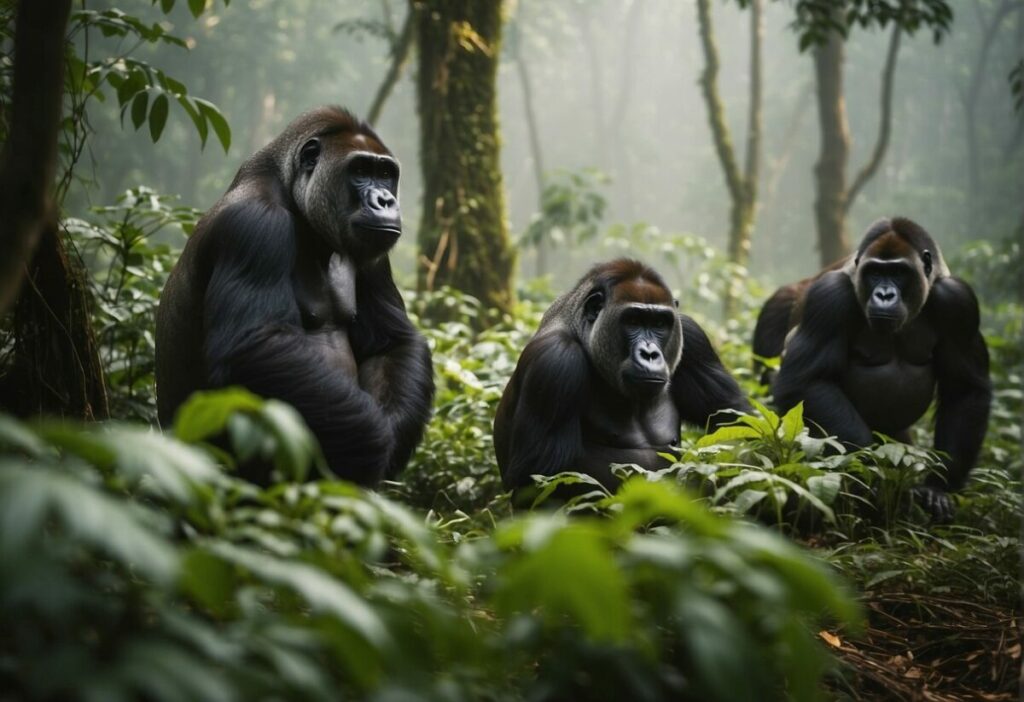
The Cross River gorilla (Gorilla gorilla diehli) is critically endangered, with estimates placing their total population between 250 and 300 individuals. This subspecies of the western gorilla is confined to the highland forests along the border of Cameroon and Nigeria.
Habitat & Threats:
Protected by law but threatened in the wild, these gorillas face habitat destruction due to logging, agriculture, and human settlement expansion. Poaching and the bushmeat trade also contribute significantly to their demise.
Physical Characteristics:
They exhibit subtle variations from their western lowland gorilla relatives, characterized by different skull shapes and tooth dimensions. Adult males can reach heights of 4.6 to 5.6 feet when standing on two legs and weigh between 309 and 441 pounds.
Conservation Efforts:
Conservation strategies are underway involving anti-poaching law enforcement and protected area management. Efforts are also being made to educate local populations to reduce hunting pressures.
Conservation Status | Critically Endangered |
|---|---|
Habitat | Highland Forests |
Primary Threats | Poaching & Habitat Destruction |
Conservation Strategies | Law Enforcement & Protected Area Management |
The urgency to bolster conservation measures cannot be understated. These gorillas represent an irreplaceable part of the planet’s biodiversity and are in dire need international support and local community engagement to secure their future.
Supporting conservation organizations and advocating for sustainable practices are vital steps everyone can take in the fight against their extinction.
Hawksbill Turtle

The Hawksbill Turtle, recognized for its beautiful shell and critical role in marine ecosystems, is classified as critically endangered by the International Union for Conservation of Nature (IUCN). They prefer tropical and subtropical seas and are distinguished by their narrow heads and hawk-like beaks.
Threats to Their Survival:
- Wildlife Trade: Hawksbill shells are highly valued in the illegal wildlife trade.
- Habitat Loss: Coastal development leads to the destruction of their nesting and feeding grounds.
- Egg Poaching: The collection of their eggs for consumption poses a significant threat.
- Fishery Bycatch: Accidental capture in fisheries often leads to death.
Conservation Actions:
- Protected under the Endangered Species Act since 1970.
- Included in Appendix I of the Convention on International Trade in Endangered Species of Wild Fauna and Flora (CITES), making trade of their parts illegal.
- Several conservation groups and governmental agencies are involved in habitat protection, reducing bycatch, and community engagement programs.
Citizens can aid in their preservation by:
- Supporting Conservation Efforts: Donating to organizations that protect sea turtle habitats.
- Responsible Consumption: Avoiding products derived from any endangered species, including turtle shell merchandise.
- Educational Outreach: Informing others about the plight of Hawksbill Turtles to grow a community aware of the issues facing these essential creatures.
Urgent cooperation and global awareness are imperative to reverse the decline of Hawksbill Turtles and ensure the health of the oceans they inhabit.
See Related: Different Turtle Species
Siberian Tiger
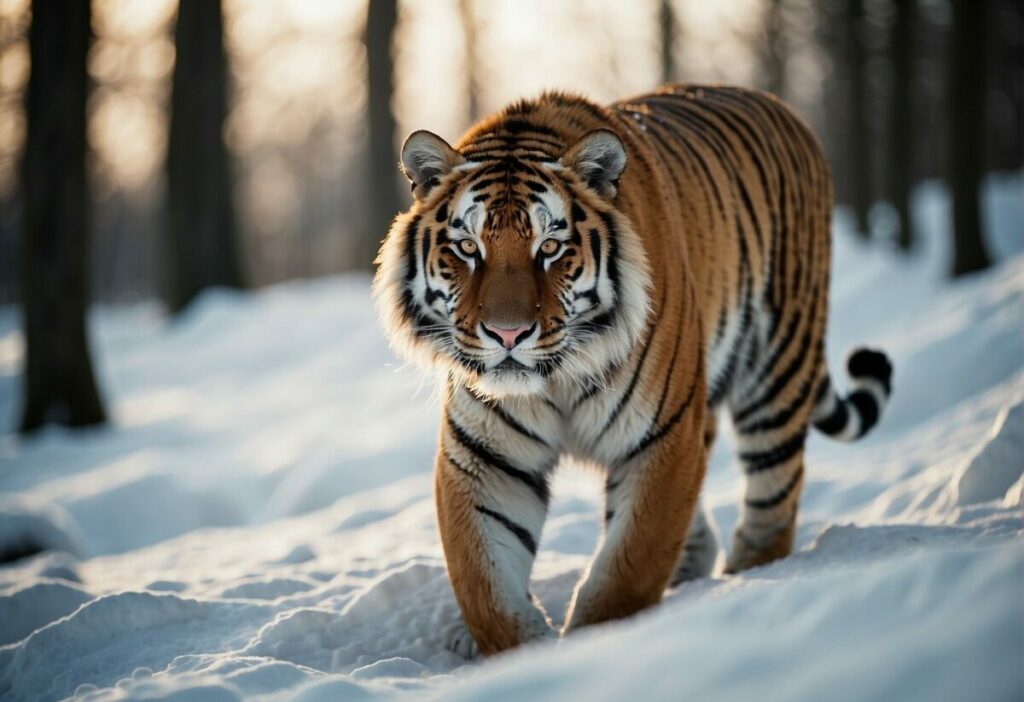
The Siberian tiger, also known as the Amur tiger, is one of the world’s most iconic yet endangered species. It is native to the Russian Far East, Northeast China, and potentially North Korea. Historically, the population’s numbers dwindled drastically, but concerted conservation efforts have provided a glimmer of hope for their recovery.
Population and Distribution:
- Estimated individuals: Around 500-600
- Primary habitat: Sikhote-Alin mountain region, Primorye Province, Russia
Conservation Status:
- IUCN Red List: Endangered
- Threats: Poaching, habitat loss, illegal wildlife trade
Threats to Survival
The primary threats the Siberian tiger faces include habitat loss and poaching, exacerbated by illegal wildlife trade. The demand for tiger parts has fueled poaching and pushed this species to the brink of extinction.
Conservation Efforts
Efforts to save the Siberian tiger have involved:
- Anti-poaching laws: Enhanced legal frameworks to deter and penalize poachers.
- Habitat preservation: Initiatives to maintain and reconnect fragmented landscapes.
- International Collaboration: Support from global and regional organizations focused on wildlife conservation.
Conservation Actions | Description |
|---|---|
Law Enforcement | Strengthening anti-poaching patrols and legal actions against violators. |
Habitat Protection | Establishing and expanding tiger reserves, protecting against deforestation |
Awareness Campaigns | Increasing public knowledge and support for tiger conservation. |
Support for Conservation
One can assist in the survival of the Siberian tiger by supporting organizations dedicated to wildlife conservation. Contributions to these groups help fund anti-poaching patrols, research initiatives, and educational programs crucial for the species’ long-term viability.
Every action counts in the mission to protect the Siberian tiger from extinction!

